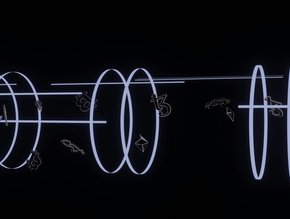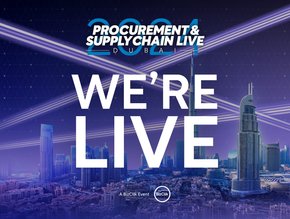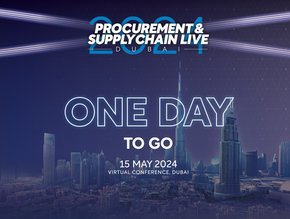Circular Economy and the Benefits Beyond Sustainability

Responsible for a significant portion of the total emissions associated with corporate activities, supply chain emissions are estimated to be around 5.5 times higher than a company’s direct emissions (CDP – Global Supply Chain Report, 2021).
While different industries will produce varying levels of emissions associated with their supply chains – manufacturing, transportation and agriculture will typically be higher than service based industries – supply chain and procurement decisions have a significant impact on the overall global emissions. Therefore strategies to mitigate the effects and reduce emissions should include not only the company’s own operations but its suppliers and partners too.
Crucial to the procurement of electrical equipment and components, circularity and repairability provide significant benefits for businesses looking to lower costs, energy consumption and emissions, and to digitise their infrastructure. While essential for supporting the energy requirements of a business, reliable equipment for industrial applications is expensive to buy and replace.
“As a result, businesses need suppliers that can extend the life cycle of a new and existing asset, while minimising waste and maintenance,” explains David Pownall, Vice President of Services at Schneider Electric UK and Ireland.
“It’s a sustainable process that fits with the circular economy model of production and consumption. It also allows supply chains to be more flexible in the face of the rising cost of raw materials, which is putting pressure on businesses to become more resilient and resource independent.”
Across sectors, organisations are looking for ways to reuse, repair, refurbish and recycle existing equipment and components for mission-critical applications. With asset lifecycle management processes, organisations can assess their existing electrical assets and infrastructure – based on age, resilience and product lifecycle – to determine whether they’re current, end of lifeor obsolete.
“This allows procurement teams to see what’s repairable and what needs replacing. The base level assessment is crucial as it provides the foundation for a sustained programme of circularity and repairability,” says David. “With this in place, organisations have a starting point for digital transformation and decarbonisation of assets and infrastructure, to support the direction of the business and its energy requirements.”
Adding to David’s comments, Clare Hobby, Director of Purchasing Engagements at TCO Certified, explains from an IT perspective: “IT products come with a number of sustainability risks which mainly happen in the supply chain. To be able to use IT products in a circular manner, you need to set the right criteria in procurement.
“By including comprehensive, challenging environmental and social sustainability KPIs in your procurement criteria, you can help your organisation reduce its climate footprint, e-waste levels and resource consumption, and avoid social supply chain risks. It also requires collaboration among suppliers, manufacturers, customers and waste management companies to cooperate and share information with each other.”
In practice, the circular economy of IT echoes the electrical equipment industry by extending product life through reuse, upgrades, repair, refurbishment and remanufacturing to give a product a second life.
The benefits of circular economy
A powerful influencer within business, procurement can be used as a strategic tool to help organisations drive a sustainable direction and develop more circular and sustainables products and business models. “This makes procurement a vital part of sustainability and ESG programmes, putting them at the heart of driving positive change for the business,” explains Clare.
A circular economy approach based on the principles of asset lifecycle management and building on the blueprint provided by a comprehensive base level assessment, helps organisations to deliver sustainability and digital transformation, as well as enabling them to decarbonise and electrify faster.
“Crucially, it helps businesses maintain aging equipment and make the right decision on when to replace, repair or refurbish a product,” adds David.
He continues: “Circularity is applied across the life cycle of our products at Schneider Electric and we aim to eliminate waste by up to 90%. This has a significant impact on the use of the materials, and dramatically reduces an organisation’s carbon footprint. It’s good for the environment, but it also maximises the use of electrical equipment and assets. This is music to the ears of stakeholders that are exerting pressure on organisations to clean up their operations and make more efficient use of energy to comply with ESG goals and meet net zero regulations.”
Beyond sustainability, what are the benefits for organisations?
Providing the foundations for long-term, sustainable asset management programmes, circularity and repairability support modernisation within an organisation. “But, to do this, equipment needs to be connected to a digital network that monitors the condition of the entire infrastructure, across buildings, estates and industrial plants,” explains David.
He adds: “In some cases, businesses have 30-40-year-old installations in place and some assets are so old they can’t connect to software, so they need to be augmented with secondary sensors to monitor performance, identify faults and anomalies. This allows businesses to get more mileage out of older equipment.”
Smart digital monitoring can also facilitate condition-based maintenance, repairs and replacements. “It enables organisations to proactively look for any identifiable risk and address it, while also helping them to keep track of all their assets, including products nearing their end-of-life,” says David.
In addition to modernisation, circular economy can also help organisations to save money, reduce costs, aand improve the overall value of IT usage.
“Strategic, sustainable procurement can help make your sustainability work more impactful and allow you to build a strong brand among employees and external stakeholders, enhancing your reputation,” says Clare.
Adopting an end-to-end approach to circular economy
By adopting an end-to-end approach to circular economy in procurement, organisations can minimise waste, maximise resource efficiency, and promote the reuse, refurbishment and recycling of products and materials by integrating circular principles throughout the procurement process.
“Schneider Electric provides businesses with unparalleled circularity and reparability. That process begins by exploring all possibilities in relation to repairing assets and equipment, versus buying new assets. It's not practical or cost effective to simply rip and replace. So, this process allows organisations to conduct a thorough cost and risk analysis of their infrastructure to help with future planning and budgeting,” explains David.
He adds: “Our consultation and design process provides the framework for sustainability programmes, digital transformation, electrification and decarbonisation. We use automation and monitoring to assess safety risks, map premises for electrical installations, identify damaged equipment and source spare parts.”
An end-to-end approach to circular economy encompasses product design, supplier engagement, material sourcing, procurement practices, inventory management, reverse logistics, collaboration, and measurements and reporting to name a few. By adopting an end-to-end approach to circular economy in procurement, organisations can not only reduce environmental footprints but also drive innovation, create value and contribute to the transition towards a more sustainable future.
******
Check out the latest edition of Procurement Magazine and sign up to our global conference series – Procurement & Supply Chain LIVE 2024.
******
Procurement Magazine is a BizClik brand.
- How RealWear's is Revolutionising Frontline SafetyTechnology & AI
- How Coupa's AI Will Help Supply Chains Overcome DisruptionsTechnology & AI
- How Walmart's Consolidation Centre Improves the Supply ChainLogistics & Distribution
- How Henkel is Making Sustainable Procurement VisibleSustainability







